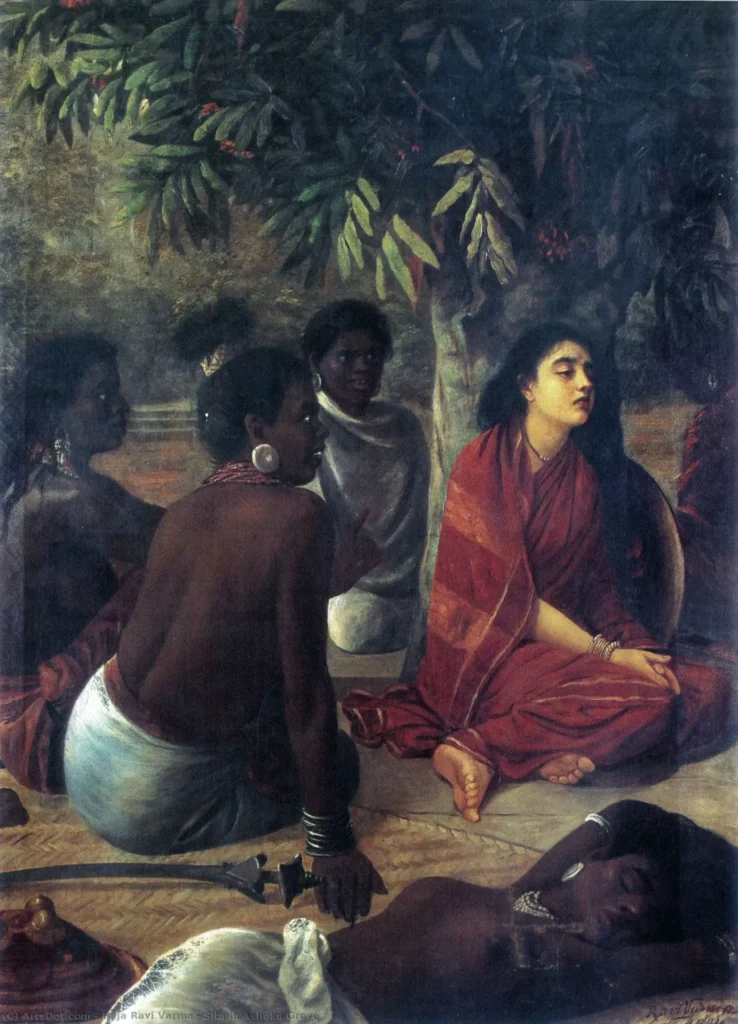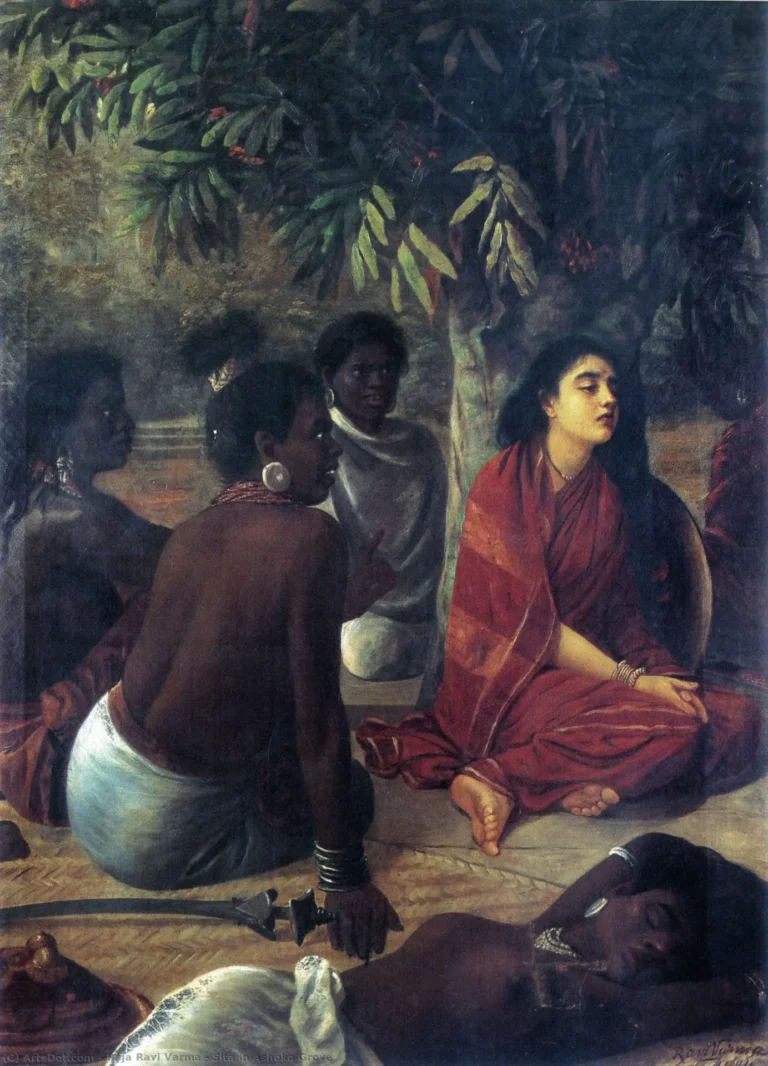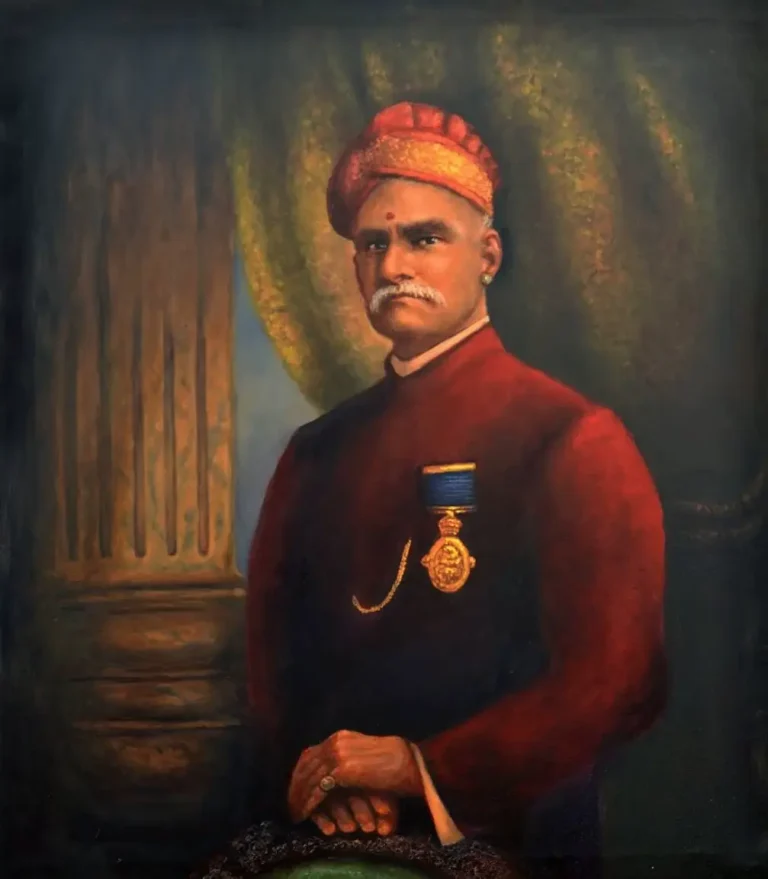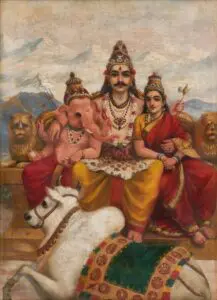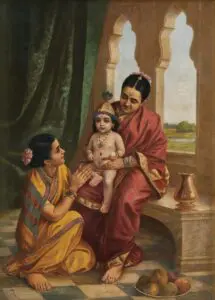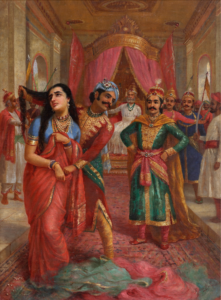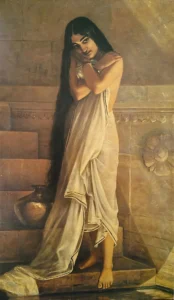Sita In Ashoka Grove
Sita In Ashoka Grove is a captivating oil painting by Raja Ravi Varma, completed in 1894. It dramatically illustrates a scene from the Ramayana, depicting Sita's plight as she is held captive by Ravana amidst the Ashoka grove. The painting juxtaposes Sita's anguish against the persuasive demeanor of the female demons around her, masterfully highlighting emotional tension. Varma’s expertise in merging Indian themes with Western styles ensures this artwork's enduring significance in Indian art history, making it a celebrated piece among enthusiasts and collectors.
Year 1894
About the Artwork
Sita In Ashoka Grove resonates with profound themes of loyalty, honor, and resilience. It narrates a significant chapter from the Ramayana, where Sita, the virtuous wife of Lord Rama, faces immense psychological pressure in captivity. Surrounded by the enchanting yet sinister Rakshasis, Sita embodies the virtues of fidelity and hope. Raja Ravi Varma, through his art, not only revives this ancient tale but also reflects the socio-cultural dynamics of his time, making this artwork a bridge between mythology and the personal struggles of women.
Did You Know
Raja Ravi Varma is often credited with popularizing Indian themes in Western art, and he played a crucial role in redefining Indian art through his use of oil paints and European techniques.
The painting reflects the cultural backdrop of 19th century India, where narratives like the Ramayana were central to Indian identity and folklore, influencing both art and literature.
Sita is celebrated as a symbol of strength and virtue in Indian culture, and her story in the Ramayana continues to inspire adaptations in various forms of art, literature, and performance across generations.




